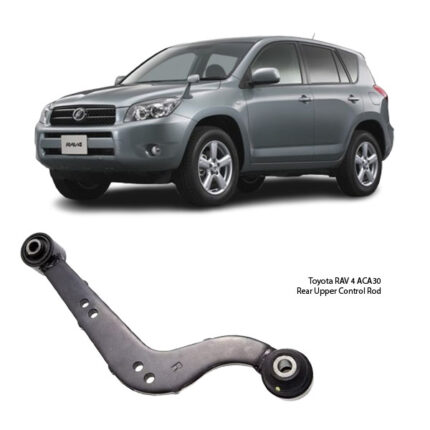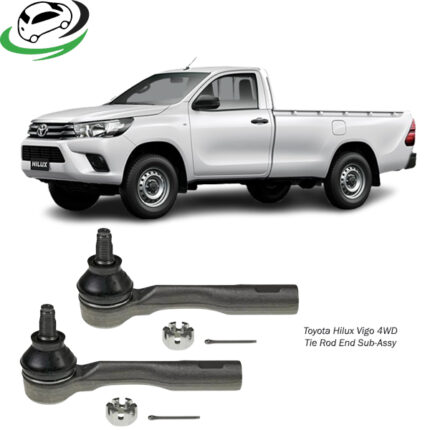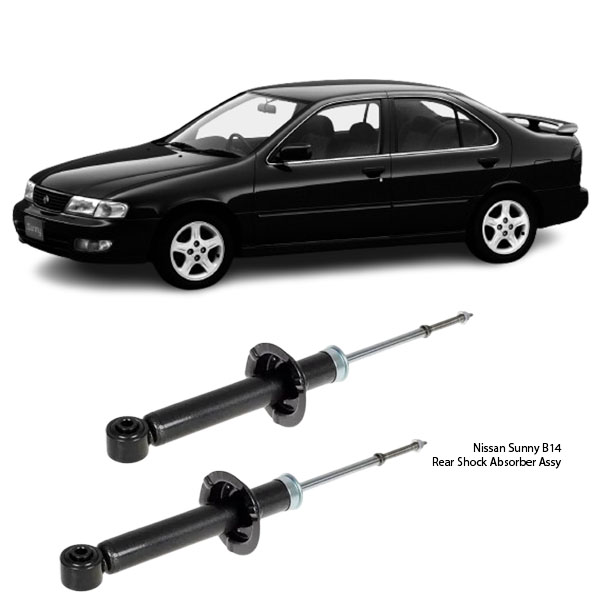-13%
Get Nissan Sunny B14 Rear Shock Absorber Assy 341194 in Kenya
When it comes to ensuring a smooth ride and maintaining control over your vehicle, shock absorbers play a critical role. Among these, the Rear Shock Absorber Assy is often overlooked but is indispensable to your vehicle’s suspension system. Located at the rear of the vehicle, these components help control the rebound and compression of the suspension system, providing a comfortable and safe driving experience.
In this article, we will delve into the purpose, function, maintenance, and replacement of the Rear Shock Absorber Assy and why it is essential to the overall health of your vehicle.
What is a Rear Shock Absorber Assy? 🛠️
The Rear Shock Absorber Assy (assembly) refers to the shock absorber component located at the rear suspension system of a vehicle. The shock absorber itself is a key element that helps to control the movement of the vehicle’s springs and suspension. It does this by absorbing and damping the energy produced when the vehicle encounters bumps, potholes, or uneven surfaces.
Typically, the rear shock absorber consists of a cylinder filled with hydraulic fluid and a piston. This piston moves up and down inside the cylinder as the suspension compresses and rebounds. The fluid inside the cylinder controls this movement, slowing it down to reduce excessive bouncing or oscillation that could affect ride quality and handling. The rear shock absorber is often paired with other suspension components such as the coil spring, leaf spring, or torsion bar, depending on the vehicle’s design.
The Role and Function of Rear Shock Absorbers 🔧
The Rear Shock Absorber Assy serves several important functions that contribute to the overall performance and safety of your vehicle:
1. Damping Suspension Movements 🌪️
When a vehicle encounters an uneven surface or bump, the wheels move up and down in response to the change in terrain. The shock absorber controls the motion of the suspension system to prevent the car from bouncing excessively. Without proper damping, the suspension would continue to move up and down (rebound), creating an uncomfortable ride and reducing the vehicle’s ability to maintain traction.
By absorbing the shock and dissipating the energy, the rear shock absorber ensures that the suspension returns to its normal position smoothly, which in turn improves the stability and comfort of the ride.
2. Maintaining Traction 🚙
The rear shock absorber plays an essential role in maintaining optimal contact between the tires and the road surface. If the shock absorber is worn or damaged, the rear wheels may lose contact with the road during sudden bumps, leading to poor traction, decreased control, and compromised safety, especially in wet or slippery conditions.
3. Enhancing Ride Comfort 🛋️
Shock absorbers contribute significantly to ride comfort by preventing the vehicle from bouncing excessively over uneven surfaces. By smoothing out the movement of the suspension, the shock absorber reduces the harshness of driving on rough roads and ensures a more stable and comfortable ride. Without a functioning rear shock absorber, even minor bumps or potholes can cause the vehicle to feel unstable.
4. Reducing Wear on Other Components 🛠️
A properly functioning shock absorber reduces the strain on other suspension components, such as the springs, bushings, and control arms. When the shock absorber is worn out, these components can take on additional stress and wear out more quickly. This can lead to expensive repairs and affect the overall handling of the vehicle.
Common Signs of a Worn or Faulty Rear Shock Absorber 🛑
Rear shock absorbers don’t last forever. Over time, they can wear out or become damaged due to age, road conditions, or driving habits. Here are some common signs that your rear shock absorbers may need attention:
1. Rough Ride 🚧
One of the most noticeable symptoms of a worn-out rear shock absorber is a noticeable decrease in ride quality. If your vehicle begins to feel unusually bouncy or stiff, it could be a sign that the rear shock absorbers are no longer performing their damping function effectively. The ride may feel harsh, even on smooth roads.
2. Nose Diving When Braking 🚨
If the front end of your vehicle dips significantly when you apply the brakes, it may indicate that the rear shock absorbers are no longer providing adequate support. This is particularly noticeable when the vehicle is under heavy braking or slowing down quickly.
3. Poor Handling or Swerving 🌀
A faulty rear shock absorber can lead to poor handling, especially in corners. If the vehicle sways excessively or feels unstable when turning, it may be due to a rear shock absorber that is unable to properly control the suspension movement. This can make the vehicle harder to control and dangerous, especially at higher speeds.
4. Uneven Tire Wear 🏎️
Worn-out shock absorbers can cause the tires to make uneven contact with the road, leading to abnormal or uneven tire wear. If you notice that your rear tires are wearing out faster than the front ones or the wear is uneven, it may be time to inspect the rear shock absorbers.
5. Visible Leaks or Damage 🔍
Shock absorbers are filled with hydraulic fluid that helps control the suspension’s movement. If you notice any oily residue or fluid leaking from the shock absorber, this is a clear sign of a damaged or worn-out unit. Additionally, if the shock absorber appears dented or otherwise damaged, it is no longer functioning properly.
How Often Should Rear Shock Absorbers Be Replaced? ⏳
While there is no set lifespan for rear shock absorbers, they generally need to be replaced every 50,000 to 100,000 miles (or 80,000 to 160,000 kilometers), depending on driving conditions and vehicle use. However, it’s important to check them regularly as part of your vehicle’s routine maintenance. For those who drive frequently on rough or unpaved roads, shock absorbers may wear out more quickly and may need to be replaced sooner.
How Rear Shock Absorbers Are Replaced 🔧
Replacing the rear shock absorber assembly is a relatively straightforward process for those with mechanical knowledge. However, for most car owners, it is advisable to have a professional mechanic handle the replacement. Here is a basic guide to the replacement process:
-
Lift the Vehicle: Use a jack to lift the rear end of the vehicle off the ground and secure it with jack stands.
-
Remove the Old Shock Absorber: Depending on your vehicle, you may need to remove the wheel and tire to access the shock absorber. Once the shock absorber is visible, unbolt it from the top and bottom mount.
-
Install the New Shock Absorber: Position the new shock absorber in place and secure it by bolting it to the top and bottom mount.
-
Reassemble the Vehicle: After securing the new shock absorber, reattach the wheel, lower the vehicle, and torque the bolts to the manufacturer’s specifications.
-
Test the Vehicle: Once the shock absorbers are replaced, take the vehicle for a test drive to ensure the suspension is functioning smoothly and the vehicle feels stable.
Conclusion: The Importance of Rear Shock Absorbers 🚙🔧
The Rear Shock Absorber Assy is a critical component in your vehicle’s suspension system, helping to ensure ride comfort, handling, stability, and safety. By absorbing shocks, reducing vibrations, and maintaining tire contact with the road, it plays a crucial role in how your vehicle behaves and drives. Regular maintenance and timely replacement of worn-out shock absorbers are essential to keeping your vehicle performing at its best.
If you experience any of the signs of a faulty rear shock absorber or if it’s been a while since your last checkup, it’s wise to have your suspension system inspected. Keeping your rear shock absorbers in top condition will not only improve your ride but also protect the longevity of your vehicle and the safety of its passengers.
Follow us on Facebook for more parts.



